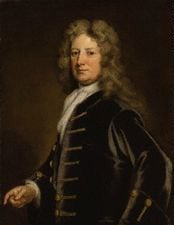The internet age has brought with it the phenomenon of patients seeking medical consultations online. We like to think of this as a new way of empowering patients, but—technology aside—this scenario would have seemed familiar to eighteenth-century sufferers. One of the reasons for Sir Hans Sloane’s voluminous correspondence (forty-one volumes at the British Library) is that wealthy patients, their friends and families, and their medical practitioners regularly consulted with him on medical matters by post. This method of medical treatment made sense in the eighteenth century, with its growing postal networks and continued focus on patients’ accounts of illness.
In her post on “Contracts and Early Modern Scholarly Networks”, Ann-Marie Hansen described the etiquette of scholarly correspondence. More broadly, there were popular manuals to provide guidance on letter-writing. In The Universal Letter-Writer (1708), for example, Rev. Thomas Cooke provided formulaic letters to discuss sickness and death (alongside topics such as “a young man inadvertently surprised with an immediate demand for payment”). There was another crucial change. Mail could of course be sent across the country and internationally in early modern Europe, but it was becoming increasingly efficient and inexpensive. From 1680, for example, the Penny Post allowed people within ten miles of London to send and to receive post within a day. It was possible to seek medical advice from the most famous physicians of the day without ever leaving home—at least for the well-to-do and literate. Medical advice by post wasn’t cheap: Sloane charged one guinea per letter.[1]
Most of the medical letters to Sloane discussed long-term or chronic ailments. Letter-writing, even at its fastest, would take at least two days, making it unsuitable for emergency or short-term problems. Mrs. J. Eyre, for example, had been suffering for over fourteen weeks by the time she wrote to Sloane. There was, however, usually some sort of incident that triggered the letter. Henry Ireton became worried in 1709 when he started to produce bloody urine and to vomit after riding a horse the previous week, but he had already been a long-term sufferer (and self-treater) of urinary complaints. The process of composing a narrative might, in itself, have been therapeutic for patients. In this way, the patient could impose order and meaning on an illness that had disrupted normal life. Such patients were also likely to be physically unable to make the trip to London to see Sloane, but could still receive the benefit of his expertise.

The first stethoscopes were not invented until the early 19th century. Monaural stethoscope, designed by Laennec. Credit: Wellcome Library, London.
One of the reasons that consultation letters made so much sense is that medical practice relied, by and large, on the patient’s narrative. Whereas surgeons treated the exterior of the body, physicians treated the interior. But, of course, they had no way to examine the insides of living bodies. There might be some physical examination, but this tended to focus on checking the eyes, ears, skin and pulse or looking at bodily excretions. With so much emphasis on the patient’s account, an actual physical presence was less important. Ideally, the patient would recount everything, saving time and money, since the doctor was unable to ask further questions immediately. Physicians could observe their patients during ordinary consultations, but in a letter, the patient’s story really was everything.
A patient’s narrative provided important clues to the patient’s humoral temperament and previous medical history. Mrs J. Eyre in 1708 noted that she did not trust local physicians to understand her choleric temperament; she did, nonetheless, report to Sloane their diagnosis of hysteria. Most importantly, though, only a patient could describe any internal symptoms to the physician. In 1725, Jane Hopson (aged over fifty) wrote to Sloane about her leg pain, a cold humour that she felt “trickling down like water”, which “the least wind pierces”. Although Elaine Scarry (and a number of other pain scholars) has claimed that pain isolates sufferers through its inability to be verbalised, eighteenth-century sufferers eloquently described their illnesses.[2] Clear narratives might have helped to elicit understanding from friends, family and physicians—and to persuade physicians that the descriptions were reliable. Only patients could provide the crucial details about internal symptoms that could help the physician in diagnosis and treatment.
Whatever rhetorical strategies might be used when composing a medical consultation letter, the correspondence had a distinctly functional purpose: to obtain the most useful treatment from a physician. The letters reflected the reliance of physicians on their patients’ stories and provided sufferers with a way of making sense of their illnesses. When it comes to electronic consultations, modern medicine has much to lose if this is primarily a cost- and time-saving measure, but much to gain if it is a real attempt to focus more on sufferers’ experiences.
[1] According to the National Archives currency converter, was about £90 in 2005 terms, or eleven days’ labour from a craft builder in 1720.
[2] Elaine Scarry, The Body in Pain: The Making and Unmaking of the World (Oxford and New York: Oxford University Press, 1985).
For a very short bibliography on medical consultation letters, see here.



